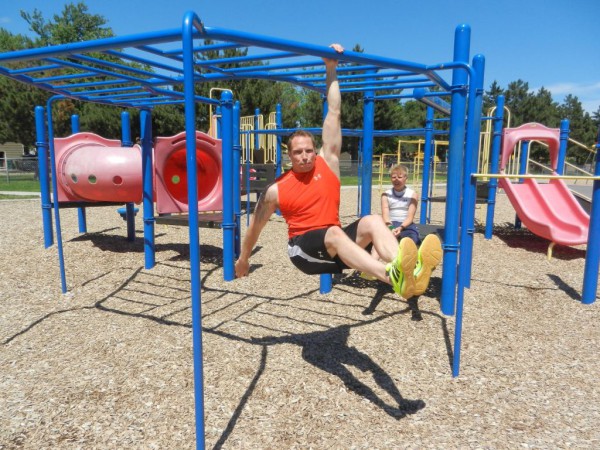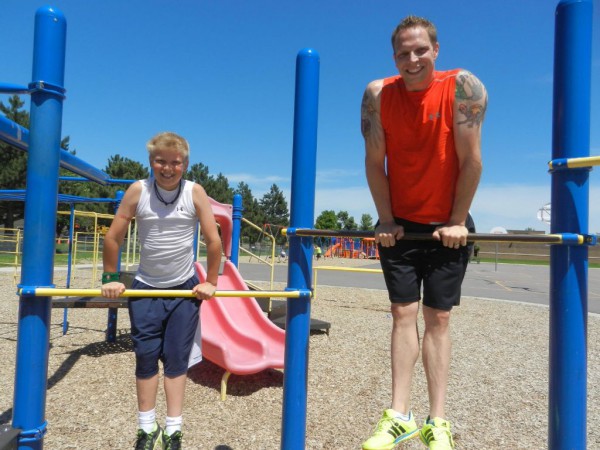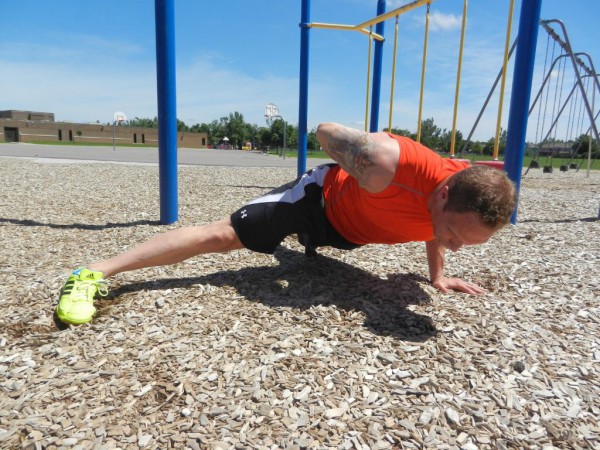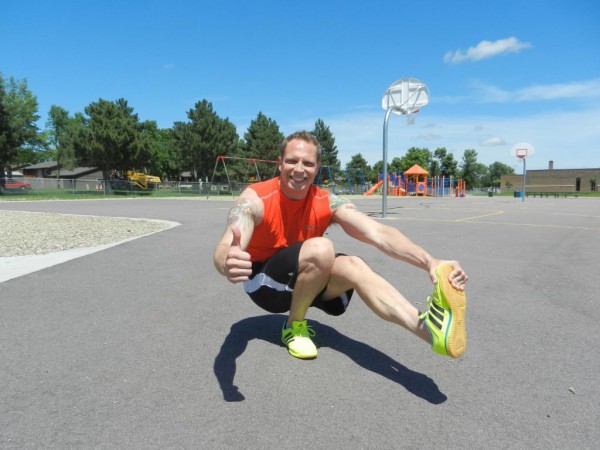 Almost everyone I’ve talked to knows the importance of incorporating training goals to improve your performance. Basically, training goals allow you to build a routine around them that is specific to them.
Almost everyone I’ve talked to knows the importance of incorporating training goals to improve your performance. Basically, training goals allow you to build a routine around them that is specific to them.
For example, if you’re training for the planche, then you typically want to be working on planche isometrics as well as some other type of pushup motion – such as one arm pushups, pseudo planche pushups, or another similar motion such as dips to supplement your strength gains. You would make sure that your sets have at least 2-3 minutes rest between them (if not a bit more) to ensure muscle recovery. You would also ensure that you would have 3 or more sets of an exercise to ensure sufficient volume for building strength. Finally, you would attempt to progress on exercises as much as possible each week to make sure that you’re not stagnating.
Likewise, if you were working on gaining pure hypertrophy you’d want to have a mix of repetition ranges between about 5 and 12. You’d want to have about 30 seconds to about 2.5 minutes rest between sets. You’d want to make sure you’re mixing compound exercises and isolation exercises together in some sort of bodyweight and weights hybrid routine.
Each of these types of routines have specific goals, and from the goals – if you know what the literature says on training information – you can accurately build a routine towards your goals. That was the main thrust of my book Overcoming Gravity. To help trainees learn to build routines towards their goals in the area of bodyweight training.
Now, I didn’t talk as much about goals for other physical activities, which is the purpose of this article. From what I have observed most people do not understand that they even need to do this, much less have the information they need to know on HOW to do it. So let’s talk about some examples.
If you sprain your ankle or hurt your back lifting something, what would the common layperson do?
What would a doctor tell you to do?
If you guessed RICE – rest, ice, compression, and elevation – for the ankle, and muscle relaxers and rest for the back you’d be correct. However, these methods actually prolong your recovery from injury. This is what most people don’t understand, but it makes sense to them when you explain it.
For instance, if you went to a physical therapist after spraining your ankle or injuring your back would you choose to not do anything they told you to? Of course not. A physical therapist would typically work on the injured area to figure out if there are any potential imbalances or other issues that need to be rehabilitated. They would give you non-painful range of motion exercises with concurrent stability exercises, and they may use modalities for pain. They would also give you a home exercise program that you would be doing all of the other 5-6 days with exercises that you would need to do at least 1-2 times a day (if not more) when you’re not in therapy.
This happens across the board with any type of injury – even catastrophic injuries such as knee replacements, rotator cuff surgeries, or ligament repairs, or any other type of major surgery. Early mobilization, muscle activation, and stabilization exercises are the key to better outcomes.
So if you get injured, the best thing to do is never pure rest. There is always something you can be doing to rehabilitate it. In a lot of these cases, a common layperson or even an experienced trainee may need to see a professional to get specific injury advice. This is what I would recommend if an injury has not significantly healed within about 1-2 weeks with non-painful mobility, stability work, and other types of early rehabilitation.
No one wants to be injured for 1-2+ months and have no clue on how to make it better. Don’t do this to yourself if you’re injured! The goal behind an injured part of the body is to restore the stability and range of motion, manage the pain well, then move into more specific rehabilitation. This goal underlies all of the recommendations above.
Now, this information is good, but let me get into some of the more applicable information for everyone else.
For example, let’s take someone with a tight back from a previous back injury – from say, 6 months ago. Or even a tight back from just having one come on from hard training. Or how about a tight shoulder or elbow tendonitis that comes on after training hard?
What is the typical recommendation for these types of situations that aren’t exactly injuries but require some amount of prehabilitation?
The common thread with these types (that is echoed across Facebook, other social media, common training articles, forums including Reddit, CrossFit, Performance Menu, American Parkour, and other various forums I visit) is that you need to do soft tissue work. Most of this includes some sort of massage, foal roller, lacrosse ball, or other implement that helps to loosen the area.
I’m going to suggest to you that this is incomplete information. Why is this information incomplete?
The body has nociceptors in place to tell you if you are putting an area at risk of injury which will signify pain to your brain. Likewise, it has mechanoreceptors and other sensory feedback that will tell the body if an area is unstable or potentially at risk for injury.
What does a body do when there’s pain or instability? It tightens up the muscles in an attempt to protect the area from further damage. This is why all of the muscles around an injured ankle get stiff and tight.
What does it do if there’s potentially an overuse injury developing? It tights up the muscles again to protect the area, and signals to the brain a nagging type of pain or discomfort.
You see, many people use soft tissue work to loosen up the tight muscles that comes with previously injured areas or areas that are starting to develop overuse injuries, but they don’t do anything afterward to follow it up. This is why foam rolling without any follow-up is incomplete.
Most people’s goals are to get back to training, usually for optimal performance. Foam rolling in this case is definitely incomplete and does not get you back to the goal. Why? Because people have to continue foam rolling week after week if the back does not get less tight or improve measurably.
This is where you see your progress stagnating. If you’re beating your head against the wall not making progress then you need to change something up. As Einstein said, the definition of insanity is…
Let me give you an example of what someone would do if they have a tight lower back, especially from a previous injury.
So if you went into physical therapy, the physical therapist would likely work on your back to loosen up the tight muscles because they are not conducive to good movement. However, this soft tissue work would be followed up with muscle activation exercises, especially if there was a lot of previous pain.
Typically, these would include exercises specific for the tranverseus abdominus muscle because when there’s pain, the timing of the body’s activation of the muscle for core stability is thrown off. Then this training would be followed up with specific isolation exercises which would develop into compound exercises. This approach works for the majority of back related injuries.
So if you have a tight back, foam rolling is generally OK as long as there is no pain and it loosens up the area. But if that’s all you do for it then it’s incomplete. You will likely have to foam roll it indefinitely before and after every training session.
If you do foam roll or use other soft tissue work you should be following it up with exercises for prehabilitation. TVA activation is pretty specific, but a lot of the pilates and yoga poses emphasize keeping the core tight while doing leg lifts, bird dogs, hip bridges, and other exercises that work pretty well. Following this up with one of the best exercises for trunk stability, the reverse hyperextension, is typically right on the money. Performing reverse hyperextensions in a slow and controlled manner works most of the back muscles in an eccentric pattern which helps them to fire and turn on in the correct pattern again.
In conclusion, if you take nothing else away from this article, take these:
- Everything you do for training should have a goal.
- If you are doing prehabilitation work, it should be with the expectation that the area you’re working on is improving either in performance or getting better. If it’s not, then there’s something you’re missing.
- Likewise, your warm up should have a specific goal. Your flexibility training should have a specific goal. Your skill training should have a specific goal. Your sleep you should have a specific goal. Even your nutrition should have a specific goal.
You should be looking to optimize and improve all facets of your training. And to do that you need goals. And you need to modify aspects of your training or your life to align with your goals.
Don’t keep beating your head against the wall with no results.
***
About Steve: Steven Low, Senior PCC and author of Overcoming Gravity: A Systematic Approach to Gymnastics and Bodyweight Strength, is a former competitive gymnast who, in recent years, has been heavily involved in the gymnastics performance troupe, Gymkana. With his degree from the University of Maryland College Park in Biochemistry, Steven has spent thousands of hours independently researching the scientific foundations of health, fitness and nutrition. Currently Steven is pursuing a doctorate of Physical Therapy from the University of Maryland Baltimore which provides him with insights into practical care for common injuries. His training is varied and intense with a focus on gymnastics, parkour, rock climbing, and sprinting. He currently resides in his home state of Maryland. His website is http://eatmoveimprove.com.



